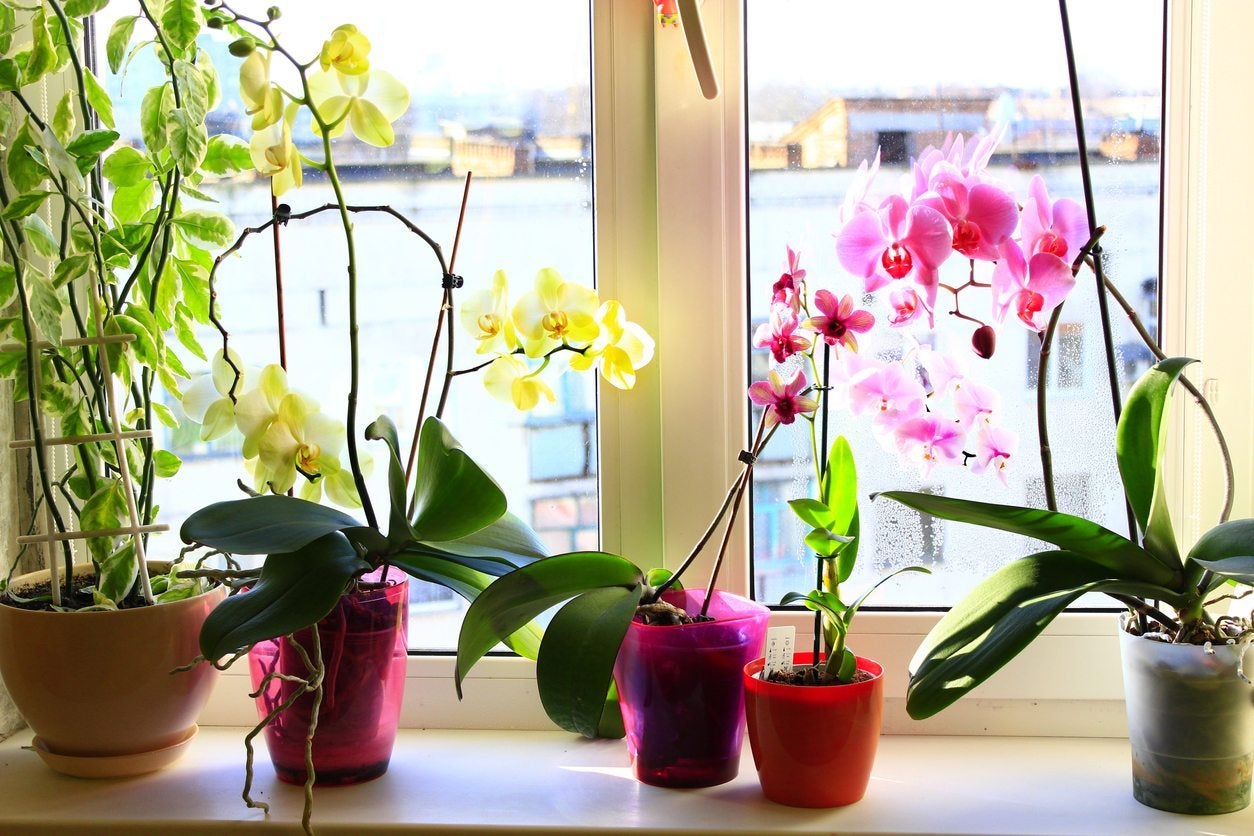Types Of Pots For Orchids – Are There Special Containers For Orchid Plants?
While the orchids we purchase have probably never experienced growing wildly in rainforests, confining their roots to a pot goes against their true primal nature. Because of this, we must select pots that allow them to grow to their full potential. Learn more here.


In the wild, most orchid plants grow in warm, humid, wooded areas, such as tropical rainforests. They are oftentimes found growing wildly in the crotches of living trees, on the sides of downed, decaying trees, or on rough shaded slopes.
The reasons they grow well in these sites is because they can absorb water from the natural humidity without intense sunlight causing too much transpiration and because heavy tropical rains drain away from their roots quickly when they grow on trees or slopes.
While the orchids we purchase at nurseries or garden centers have probably never experienced growing wildly in rainforests, confining their roots to a pot goes against their true primal nature.
Due to this, as orchid growers, we must do our best to select pots that allow them to grow to their full potential.
About Orchid Containers
When you purchase an orchid from a greenhouse or garden center, they are usually sold in clear plastic pots with several drainage holes. These clear plastic pots may be placed inside decorative glazed pots and sold altogether, or the decorative pots may be sold separately as an add-on item.
The decorative pots are purely aesthetic, usually lack proper drainage, and are really not necessary at all. In fact, decorative pots without proper drainage holes can oftentimes lead to overwatering and root diseases in orchids.
In addition to this, the chemicals in certain glazes that are used for ceramic pots can be very harmful to the roots of sensitive orchids.
Sign up for the Gardening Know How newsletter today and receive a free copy of our e-book "How to Grow Delicious Tomatoes".
The clear plastic pot does have some benefits for orchids and orchid growers though. Clear plastic pots can allow us to easily switch decorative containers to correspond to different holidays or room décor.
However, if you do place these clear plastic pots in decorative pots, it is a good idea to remove them during watering to allow for proper drainage.
Clear plastic pots also allow us to easily inspect the roots of our orchid plants for pests, disease, or overcrowding.
When left out of decorative pots, the clear plastic pots allow the orchid roots to absorb sunlight, as they would in nature growing on the side of a tree. This means the roots can also photosynthesize and add energy to the plant.
Are There Special Containers for Orchid Plants?
Do orchids need special pots? Many greenhouses or garden centers that sell orchids will also sell special pots for orchids. These specific containers for orchid plants usually have slats or cut out shapes on the sides to allow for better drainage and air flow to the roots.
Slatted wooden boxes are also sold as orchid containers. However, you don’t need to spend a fortune on specialized containers for orchid plants. Any pot with good drainage can house an orchid plant.
When growing orchids in containers, be sure to select pots with 4 to 12 drainage holes. Most orchids do prefer shallower squat pots, as their roots don’t like all the moisture retained in deep pots and they just don’t need the depth anyway as their roots spread out, not down.
When using a deep pot, place lava rock or packing peanuts in the bottom of the pot to save some money on unnecessary potting medium that the orchid roots will never use, but also to improve drainage.
Also, when repotting an orchid every one to two years, only choose a pot that is about an inch (2.5 cm.) wider than the previous pot; it does not need to be any deeper, only wider.
Types of Orchid Pots
Below are the pros and cons of different pots for orchids:
Plastic Pots – Plastic pots retain more moisture in the pot mix. They also help keep the roots warmer in cooler climates. Plastic pots are very lightweight and can tip over easily with tall, top-heavy plants.
Clay or Terra Cotta Pots – Clay pots are heavier, leading to less tipping. They can also help keep orchid roots cooler in warm climates. Many clay or terra cotta pots have only one drainage hole, but the clay breathes and allows water to evaporate quicker, therefore, you may have to water more often.
Wooden Slatted Containers or Baskets – Depending on what potting media you use, it can spill out of slats in wooden slatted pots or baskets, so you might want to line them with sheets of moss. Wooden slatted containers or baskets allow for a lot of drainage and air flow to the roots, so you may have to water them frequently. Another way orchid growers display their prized orchid plants is by mounting them on driftwood or actual trees.

Darcy is a former contributor to Gardening Know How. She is a professional landscape designer and gardening writer with experience in plant sales. An avid gardener, Darcy has a passion for sharing practical tips to help others grow.